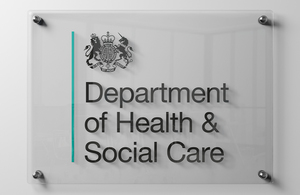Measures currently in place in the UK to reduce the potential risk of vCJD transmission via blood
No evidence of any UK clinical cases of variant Creutzfeldt-Jakob Disease (vCJD) being linked to a blood transfusion given after 1999.

Recent media reports based on scientific studies have prompted questions about the work undertaken to safeguard the blood supply from Variant Creutzfeldt-Jakob Disease (vCJD).
The Department of Health issued the following statement in response:
We encourage people of all ages to give blood. We have one of the safest blood supplies in the world and this study relates to people’s potential to develop vCJD, not additional cases — in fact there have been no new cases in the UK for more than two years.
Independent experts from SaBTO have used this study during their considerations of measures to reduce the potential risk of transmission through blood transfusions. There is no evidence of any UK clinical cases of vCJD being linked to a blood transfusion given after 1999.
Since 1996, when the theoretical risk of vCJD transmission through blood was first identified, a series of precautionary measures have been implemented to reduce the risk to the blood supply and to products made by fractionating plasma, these include:
Applicable to all blood/blood products
-
From December 1997, blood components, plasma products or tissues obtained from any individual who later develops clinical vCJD, have been withdrawn/recalled to prevent their use
-
From October 1999, white blood cells (which may carry a risk of transmitting vCJD) have been reduced in all blood used for transfusion, by a process known as leucodepletion or leucoreduction
-
From April 2004, following the report of the first presumed case of transmission of vCJD by blood transfusion, individuals who had themselves received a transfusion of blood components since January 1980 were excluded from donating blood
- In July 2004, this exclusion criterion for blood donation was extended to include two new groups, who had received transfusions of blood components since 1980:
- Previously transfused platelet donors
- Donors who were unsure if they had previously had a blood transfusion. This now applies to donors who have been transfused anywhere in the world
-
In July 2005, the Department of Health announced further precautionary measures for around 100 individuals who donated blood to three people who later developed vCJD. The notified people have been asked not to donate blood, tissues or organs and to inform health care professionals so extra precautions can be taken when they have surgery or other invasive procedures
- In November 2005, the Department of Health announced an extension of the July 2005 notification exercise. A further 50 people who had received blood from some of the 100 or so donors notified since July 2005 were traced and notified of their potential exposure to vCJD, and asked to take similar precautions
Plasma
-
Since 1999, plasma for the manufacture of fractionated plasma products, such as clotting factors, has been obtained from non-UK sources
-
Since 2004, fresh frozen plasma for treating babies and young children born on or after 1 January 1996 has been obtained from the USA
-
Fresh frozen plasma for treating babies and young children born on or after 1 January 1996 has been obtained from the USA, and from July 2005 its use was extended to all children up to the age of 16
-
The NHS has been instructed to purchase imported solvent detergent-treated pooled plasma for adult patients with thrombotic thrombocytopenic purpura
-
Synthetic (recombinant) clotting factor for treatment of haemophilia has been provided to the under-16s since 1998 and for all patients for whom it is suitable since 2005
Platelets
- To reduce donor exposure, the Advisory Committee on the Safety of Blood, Tissues and Organs in 2009 reiterated its predecessor committee’s advice on increasing the percentage of platelets collected by apheresis to at least 80%.
Cryoprecipitate (a special cold-treated plasma preparation)
- Cryoprecipitate produced from methylene blue treated-plasma imported from the USA is being implemented for children up to the age of 16. The Advisory Committee on the Safety of Blood, Tissues and Organs is reviewing use of cryoprecipitate in older patients
All of these recommendations were recommended or endorsed by the Advisory Committee on the Safety of Blood, Tissues and Organs (which first met in January 2008), or its predecessor committees.
Additionally, considerable effort is being extended to promote appropriate use of blood throughout the NHS, to target blood use to where it is clinically essential. This work has already achieved notable successes, especially in reducing the use of blood in surgery.